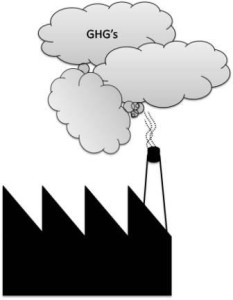Leaked UN Report Says Level of Greenhouse Gases Rising Rapidly
 Leaked draft IPCC UN report on 17 January 2014 has warned about rise of the level of greenhouse gases and it calls for greater global efforts to tackle the issue. The Intergovernmental Panel on Climate Change (IPCC) report has also mentioned that if the current situation continues that hugely expensive technology will be required.
Leaked draft IPCC UN report on 17 January 2014 has warned about rise of the level of greenhouse gases and it calls for greater global efforts to tackle the issue. The Intergovernmental Panel on Climate Change (IPCC) report has also mentioned that if the current situation continues that hugely expensive technology will be required.
The report has mentioned that during 2000 to 2010, CO2 has grown by 2.2 percent per year and this rise is almost twice higher from the growth of the period of 1970 to 2000. It also has asked the global community to cut the emissions without any delay and also suggested to make a shift towards the clean energy.
The leaked report has also mentioned that the speed with which CO2 will be continued than the conservation process that has been initiated will fail to respond to the impact of the environment. The report has also accused the population and economic growth at a fast pace for the rise of the greenhouse emissions. It also asks the government to spend more on switching towards cleaner energy.
UN would have published this partially drafted report in April 2014 as the work on the project is under progress. The politicians of the world in tried to limit the global average of temperature to increase of 2 degrees celsius at the Copenhagen Climate Conference in 2009.
The Copenhagen Climate Change Conference raised climate change policy to the highest political level. Close to 115 world leaders attended the high-level segment, making it one of the largest gatherings of world leaders ever outside UN headquarters in New York.
COP 15 / CMP 5 was a crucial event in the negotiating process as it significantly advanced the negotiations on the infrastructure needed for effective global climate change cooperation, including improvements to the Clean Development Mechanism of the Kyoto Protocol. It produced the Copenhagen Accord, which expressed clear a political intent to constrain carbon and respond to climate change, in both the short and long term.
The Copenhagen Accord contained several key elements on which there was strong convergence of the views of governments. This included the long-term goal of limiting the maximum global average temperature increase to no more than 2 degrees Celsius above pre-industrial levels, subject to a review in 2015. There was, however, no agreement on how to do this in practical terms. It also included a reference to consider limiting the temperature increase to below 1.5 degrees – a key demand made by vulnerable developing countries.
Developed countries promised to fund actions to reduce greenhouse gas emissions and to adapt to the inevitable effects of climate change in developing countries. Developed countries promised to provide US$30 billion for the period 2010-2012, and to mobilize long-term finance of a further US$100 billion a year by 2020 from a variety of sources.
Agreement on the measurement, reporting and verification of developing country actions, including a reference to “international consultation and analysis”, which had yet to be defined.
The establishment of four new bodies: a mechanism on REDD-plus, a High-Level Panel under the COP to study implementation of financial provisions, the Copenhagen Green Climate Fund, and a Technology Mechanism.


